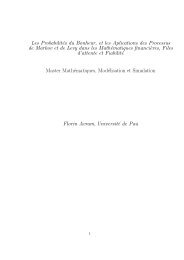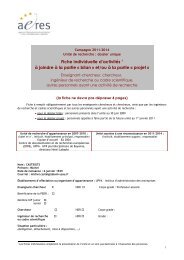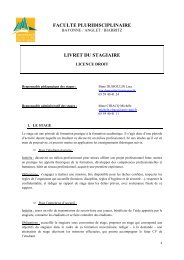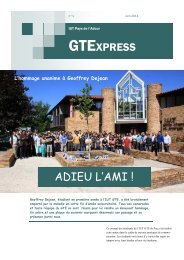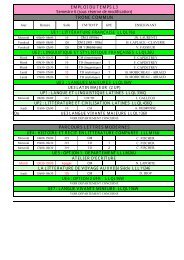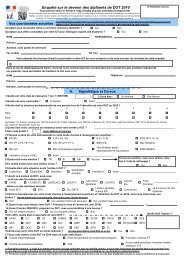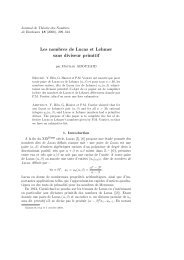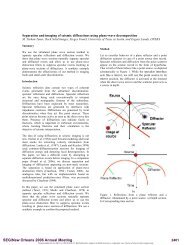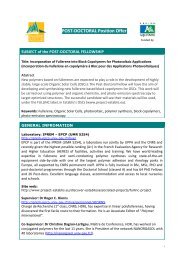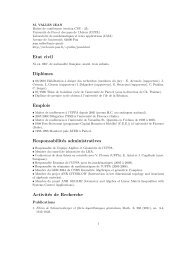Processus de Markov, de Levy, Files d'attente, Actuariat et Fiabilité ...
Processus de Markov, de Levy, Files d'attente, Actuariat et Fiabilité ...
Processus de Markov, de Levy, Files d'attente, Actuariat et Fiabilité ...
Create successful ePaper yourself
Turn your PDF publications into a flip-book with our unique Google optimized e-Paper software.
Chapitre 4<br />
The Cramér-Lundberg and <strong>Levy</strong> risk<br />
mo<strong>de</strong>ls<br />
4.1 Introduction<br />
The problem of approximating the distribution of sums of in<strong>de</strong>pen<strong>de</strong>nt random variables<br />
and the related ”gambler’s ruin” problem, first studied by Bernoulli, DeMoivre, Fermat,<br />
Huyghens, Laplace, Lagrange, Pascal, <strong>et</strong>c., are masterpieces of applied probability. The second<br />
problem, also known as ”first passage problem”, is central to numerous applications in<br />
actuarial science, telecommunications, mathematical finance, <strong>et</strong>c., and has stimulated many<br />
illustrious mathematicians, among which are Thiele (differential equation, interpolation formula),<br />
Gram (Gram-Charlier expansion), Lundberg, Cantelli, Cramér, Erlang, <strong>de</strong> Fin<strong>et</strong>ti,<br />
Segerdahl, Wald and Thorin.<br />
For extensive references, see e.g. Borovkov (1976), Prabhu (1997), Rolski <strong>et</strong> al. (1999),<br />
and Asmussen (2000), (2003).<br />
The Cramer-Lundberg risk mo<strong>de</strong>l. The ”bird’s eye’s view” of the ”actuarial ruin<br />
problem” is captured by the so called ”Cramér Lundberg risk mo<strong>de</strong>l” (?) Lun :<br />
N(t)<br />
∑<br />
X(t) = u + c t − C(t) := u + c t − C i where : (4.1) CLmod<br />
– X(0) = u <strong>de</strong>notes the initial reserves of the risk process<br />
– c is the premium rate per unit of time.<br />
– The IID nonnegative RVs C i with CDF B(u) mo<strong>de</strong>l the ”claims”, N(t) is an in<strong>de</strong>pen<strong>de</strong>nt<br />
Poisson process with intensity λ > 0 counting the number of claims, and the<br />
compound Poisson process C(t) = ∑ N(t)<br />
i=1 C i mo<strong>de</strong>ls the ”cumulative claims”.<br />
Remarque 4.1.1 The case of practical interest is when the n<strong>et</strong> profit rate p = c − EC(1) is<br />
positive. The relative profit with respect to the expenses<br />
i=1<br />
θ = c − EC(1)<br />
EC(1)<br />
= p<br />
EC(1)<br />
is called relative saf<strong>et</strong>y loading. The premium rate may be <strong>de</strong>composed as<br />
c = EC(1) + p = (1 + θ) EC(1).<br />
98



